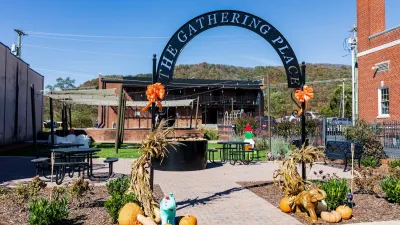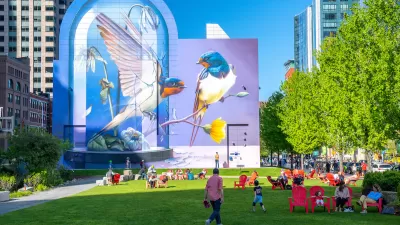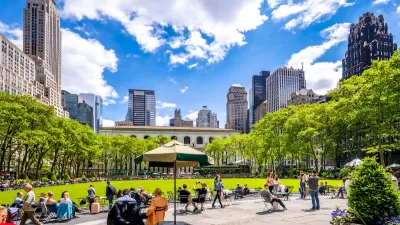I have to admit, listening to Peter Lovenheim talk about his book “In the Neighborhood, The Search for Community on an American Street, One Sleepover at a Time”, spiked my planner’s radar. In his novel, the journalist, quite intentionally, well, the title is self-explanatory isn’t it? It sounded a bit hokey and contrived at first, as did the interview. Lovenheim explained that the only way to truly get to know someone and develop a real sense of intimacy and bond was to sleep in their home and shadow them for the day. But the real story is about the loss of intimacy and comfort among neighbors.
I have to admit, listening to Peter Lovenheim talk about his book "In the Neighborhood, The Search for Community on an American Street, One Sleepover at a Time", spiked my planner's radar. In his novel, the journalist, quite intentionally, well, the title is self-explanatory isn't it? It sounded a bit hokey and contrived at first, as did the interview. Lovenheim explained that the only way to truly get to know someone and develop a real sense of intimacy and bond was to sleep in their home and shadow them for the day. But the real story is about the loss of intimacy and comfort among neighbors. Lovenheim's quest to understand why people who share the same street are unable to share anything else about themselves is actually a reflection of how our neighborhoods are designed and laid out.
A fellow blogger last month wrote that drawing ability was not a prerequisite for being a planner. But understanding spatial relationships certainly is. Lovenheim's neighborhood is a picturesque curving and undulating street, with stately homes which are set far back from the street. The house on the hill design had decreased opportunity for neighbors to casually meet and interact so Lovenheim quite deliberately befriended a handful of people, and matched them together to form a traditional unit of neighbors who could depend on each other through challenging times, what sociologists and planners referto as creating social capital.
What was most interesting to me was that almost all of the neighbors on Lovenheim's street had an intense need to be part of a community and a social network, but they didn't have the facilities to achieve it. One neighbor observed that public spaces have largely been privatized into commercial spaces. Think about the coffee shop, king Starbucks, bookstores. These are little self-contained units with a small entry fee. Another neighbor contrasted American neighborhoods to African tribal villages whose homes are traditionally organized around acentral space out of a primal need for survival. She observed that American neighborhoods are designed for privacy to fuel the prevailing ideology that we can survive alone. And then she suggests the antidote to this landscape of isolation parks! Brilliant.
We obviously can't retrofit our neighborhoods to the tribal village model, or wait for a creative type to take it upon himself to bring the neighbors together one sleepover at a time, but we can introduce more central spaces, parks, playgrounds, community gardens to our neighborhoods.

Alabama: Trump Terminates Settlements for Black Communities Harmed By Raw Sewage
Trump deemed the landmark civil rights agreement “illegal DEI and environmental justice policy.”

Study: Maui’s Plan to Convert Vacation Rentals to Long-Term Housing Could Cause Nearly $1 Billion Economic Loss
The plan would reduce visitor accommodation by 25% resulting in 1,900 jobs lost.

Planetizen Federal Action Tracker
A weekly monitor of how Trump’s orders and actions are impacting planners and planning in America.

Federal Homelessness Agency Places Entire Staff on Leave
The U.S. Interagency Council on Homelessness is the only federal agency dedicated to preventing and ending homelessness.

Restoring Northern India’s Himalayan ‘Water Temples’
Thousands of centuries-old buildings protect the region’s natural springs and serve as community wells and gathering places.

Milwaukee to Double Bike Share Stations
Bublr Bikes, one of the nation’s most successful, will add 500 new e-bikes to its system.
Urban Design for Planners 1: Software Tools
This six-course series explores essential urban design concepts using open source software and equips planners with the tools they need to participate fully in the urban design process.
Planning for Universal Design
Learn the tools for implementing Universal Design in planning regulations.
Caltrans
Smith Gee Studio
Institute for Housing and Urban Development Studies (IHS)
City of Grandview
Harvard GSD Executive Education
Toledo-Lucas County Plan Commissions
Salt Lake City
NYU Wagner Graduate School of Public Service






























